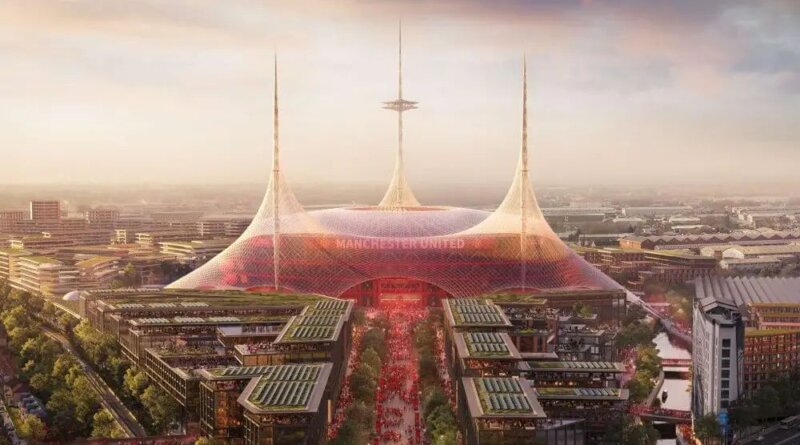Man Utd Old Trafford Redevelopment Faces Major Setback
Manchester United Old Trafford redevelopment plans have hit a significant roadblock as the club steps back from its original proposal featuring a divisive canopy design. The ambitious scheme, first unveiled in March, envisioned a futuristic three-pronged canopy enveloping Old Trafford. However, mounting concerns over land acquisition costs and divided supporter opinions have forced the club to reconsider its options.
Manchester United Old Trafford Redevelopment: Rethinking the Vision
The initial blueprints for Manchester United’s Old Trafford redevelopment captured widespread attention. The canopy concept, intended to revolutionize the stadium’s appearance and fan experience, sparked passionate debate among supporters. Many were excited by the prospect of a world-class, modernized ground, while others feared the design strayed too far from Old Trafford’s traditional identity.
The key stumbling block has been the acquisition of surrounding land, which is reportedly eight times costlier than early projections. This massive financial hurdle makes the original expansion, which would have dramatically increased the stadium’s footprint, far less viable. As a result, club officials are now evaluating scaled-back alternatives that prioritize feasibility while still aiming to modernize the iconic venue.
Supporter Sentiment and Financial Realities
Fans have long been divided over the redevelopment plans. While some welcomed the bold new vision as a necessary step for Manchester United in the era of modern stadiums, others voiced concerns about the canopy’s visual impact and the potential loss of the stadium’s historic character. The club’s decision to backtrack from the canopy concept is likely to appease traditionalists, but it also raises questions about the scale and ambition of the eventual project.
Financial realities are now at the forefront of the club’s planning. The land acquisition costs not only threaten to inflate the overall budget, but also risk diverting funds away from other crucial investments, such as squad development or fan facilities. Manchester United must now balance its desire for a state-of-the-art stadium with the practical needs of its supporters and the club’s long-term competitiveness.
What’s Next for Manchester United and Old Trafford?
With the original Old Trafford redevelopment plans shelved, Manchester United are working closely with architects and city officials to craft a more pragmatic approach. This likely means a phased renovation, focusing on modern amenities, improved accessibility, and incremental capacity increases rather than wholesale transformation. The club remains committed to ensuring Old Trafford remains a world-class venue, even if its new look is less radical than originally planned.
As the redevelopment process unfolds, Manchester United will continue to engage with supporters and stakeholders. The next steps will be crucial in ensuring the club’s home retains its iconic status while meeting the demands of future generations. For more news on Manchester United’s ongoing stadium developments and updates from around the football world, visit for more news.
Opinion: A Sensible Move Amidst Challenges
Stepping back from the ambitious canopy design shows that Manchester United is listening to both financial realities and the concerns of its fanbase. While fans may be disappointed by the lack of radical transformation, a measured approach that respects tradition and fiscal responsibility is likely to earn broad support in the long run. The challenge now is for the club to deliver a redevelopment plan that honors Old Trafford’s heritage while securing its future as a top-tier football venue.
Your global gateway to nonstop football coverage:
News Goal
Share this content:

